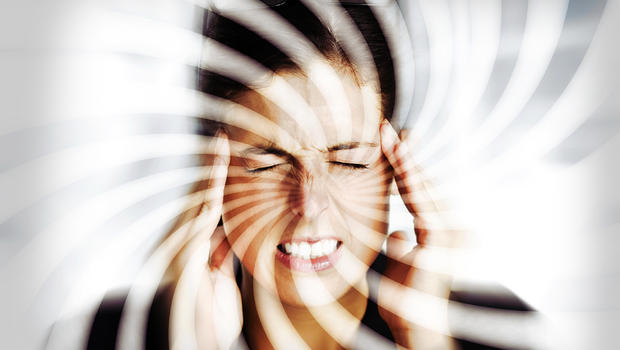by Specialdocs Consultants, LLC | Nov 20, 2017 | Patient News, Wellness

“I think that you will all agree that we are living in most interesting times. I never remember myself a time in which our history was so full, in which day by day brought us new objects of interest, and, let me say also, new objects for anxiety.”
Was the above heard: 1. At a recent town hall meeting in Florida? 2. On the 2016 campaign trail? 3. During an 1898 address by a British statesman?
It may surprise you to learn that number 3 is the correct answer, and provides a welcome bit of perspective on the stress felt by every generation. While current times are considered stressful by a majority of adults, we also have better ways to identify, manage and prevent it than before.
Did You Know?
60-80% Percentage of visits to primary care physicians for stress-related conditions. Sources: APA, Mayo Clinic, Benson Henry Institute
Causes of stress
While stressors of American adults have remained fairly stable over the years, some are specific to the decade. As the American Psychological Association’s “2017 Stress in America” survey shows, the political climate and technology-centric world has caused an uptick in stress:
One nation, over stressed. 57% of Americans report the political climate is a significant source of stress; 66% say the same about the nation’s future. Stress about acts of terrorism was high at 59%, while worries over personal safety rose to 34%, the highest since the question was first asked in 2008.
Money, money, money. Other top causes of stress include money (61%), work (58%) and the economy (50%).
Media overload. Although nearly all adults own at least one electronic device, and more than 86% check emails, text or social media accounts daily, those who do so constantly report higher stress levels.
How to cope: For decades, stress-related issues have been recognized as the leading cause of visits to a primary care physician. Stress-relieving techniques continue to evolve:
Eat, pray, love. Exercise and going online are frequently used to manage stress. Women, how- ever, also reported spending time with friends or family, reading, engaging in prayer or eating as their primary methods of relieving stress.
Unplug. Interestingly, while 65% of Americans agree that periodically disconnecting is important for mental health, only 21% actually report doing so. Some techniques that work include no cell phones at the dinner table or while with friends, periodic digital detoxes, watching less tv, and turning off notifications for social media apps.
Trigger your relaxation response. Based on Dr. Herbert Benson’s 1974 discovery of an opposite state to the fight-or-flight response, the relaxation response puts the body in a state of deep rest. Techniques include mindful meditation, repetitive prayer, focused breathing, progressive muscle relaxation, tai chi and yoga. Studies have shown significant short-term impact on stress symptoms, as well as profound long-term improvements. Immediate reductions in blood pressure, heart and breathing rate helps manage periods of acute stress. If practiced regularly, the relaxation response can also help decrease inflammation and stress hormone levels and improve insulin activity and gastrointestinal issues.
Types of stress
Acute stress, the most common form, is experienced by virtually everyone at some point. Arising from the pressures of current conditions, and anticipated ones in the near future, acute stress can be exciting, even motivating, but too much is simply exhausting.
Symptoms: Emotional distress, such as anger, irritability, anxiety or depression; muscular problems including tension headache, back or jaw pain; stomach and bowel problems; temporary elevation in blood pressure; rapid heartbeat; sweaty palms, heart palpitations; dizziness; shortness of breath.
Solutions: This stress is short-term and highly manageable. Techniques to slow your breathing and focus your attention, as well as walking outdoors or participating in sports, can all help dispel it.
Episodic acute stress is a fact of life for those people who are always rushed, late and dealing with a plethora of self-inflicted demands and pressures. This category includes “Type A” personalities – aggressive, impatient, short-tempered. Another type of person who feels episodic acute stress is the worrier – those with a pessimistic world view and a tendency to catastrophize every situation; likely to also feel anxious and depressed.
Symptoms: Persistent tension headaches, insomnia, migraines, hypertension, chest pain and heart disease.
Solutions: Lifestyle changes, such as daily physical exercise, meditation and mindful prayer, as well as expanding social support, can help. Additionally, consider consulting with a psychologist or other mental health professional, who can offer a range of treatment, from pharmaceutical to biofeedback. For example, insomnia, a considerable source of stress in adults, can be remedied with cognitive behavioral therapy, CBT-I, a structured program to help replace negative or obsessive thoughts that keep you up at night with habits that promote sound sleep. Unlike sleeping pills, CBT-I helps you overcome the underlying causes of your sleep problems.
Chronic stress wears people down on a daily basis, often for years. Whether the cause is a dysfunctional family situation a bad career fit, people suffering from chronic stress often can’t see a way out.
Symptoms: Anxiety, insomnia, muscle pain, high blood pressure, weakened immune system; can contribute to the development of heart disease, depression and obesity.
Solutions: The most effective strategy is to seek help from professionals who can help you develop and implement lifestyle and behavior changes, recommend therapy, and prescribe medication when needed.
The post Stressed Out? A Guide to Signs, Symptoms appeared first on Specialdocs Consultants.
by Specialdocs Consultants, LLC | Nov 20, 2017 | Healthy Aging, Patient News

“Walking is man’s best medicine.” Hippocrates
Put away the handheld brain games and turn your focus from lifelong learning to lifelong walking. The road to sustaining brain health is an active one and taking that first step, followed by thousands more on a daily basis, can make an enormous difference in quality of life in your later years. Arthur Kramer, PhD, director of the Beckman Institute for Advanced Science and Technology at the University of Illinois, has amassed decades of research that clearly points to the prescience of Hippocrates’s ancient wisdom. His studies have become a focus of public health policy as well, sparked by 10,000 Baby Boomers crossing the over-65 threshold each day for the next 15 years, each hoping to age with vigor and dignity intact. We checked in with Dr. Kramer for an update on how physical activity keeps the brain healthy over the lifespan.
What are the most striking results seen in your research?
Our 2006 study was one of the first to report actual increases in brain volume in the prefrontal and temporal cortices of seniors who participated in aerobic exercise. These areas of the brain normally decline with age, but in our group, significant improvements in cognitive performance and memory were noted. We subsequently explored the impact of exercise on white matter, which allows information to be transferred within the brain, and found that connectivity is markedly improved, which is linked to more efficient memory, attention and decision making capabilities. All this points to the fact that age-related cognitive and brain changes are not inevitable, and can actually be reversed.
Why does exercise trigger these changes?
Several theories: increased blood flow, which improves cerebrovascular health; the release of proteins in the brain that stimulate the growth of new neurons; and the benefits of glucose and lipid metabolism which bring nourishment to the brain.
What type of exercise is most effective?
Only modest increases in physical activity are needed. Walking 40 minutes three times a week for a year, at up to 70 percent of maximum heart rate, resulted in increased volume of the hippocampus, a part of the brain responsible for memory. You don’t have to run marathons – just walk, bike or swim at moderate intensity.
Tell us why you joined an international group of leading scientists who posted a strongly worded statement on the Stanford Center on Longevity website as to the unproven efficacy of ‘brain games.’
We felt that the scientific literature does not support claims made by the manufacturers of software-based brain games…that these can make people smarter, more alert, able to learn faster, and even prevent or reverse Alzheimer’s disease. What we discerned from the research was that when people practice a task repeatedly, they will get better at that task, but it is not necessarily applicable to real-world functions. The relationship between brain training games and real-world performance and cognition needs to be explicitly tested. Unfortunately, this is rarely done. Further, time spent on brain training can be better used for activities we know improve cognitive functioning – aerobic exercise, learning a new sport or a new language, staying socially connected. Our consensus was that the promise of a magic bullet detracts from the best evidence to date…cognitive health in old age reflects the long-term effects of healthy, engaged lifestyles.
As a contributor to the recent Institute of Medicine report on cognitive aging, what lifestyle modifications do you suggest?
Being physically active is unquestionably a top recommendation for enhancing cognition and longevity. We also noted the critical importance of reducing and managing cardiovascular disease risk factors; staying socially and intellectually engaged; getting adequate sleep and receiving treatment for sleep disorders as needed; and regularly reviewing health conditions and medications
that might influence cognitive health with a physician. What’s on your radar for future research? We are looking at what types of exercise lead to the largest cognitive and brain benefits. Dance is
particularly interesting because it’s physical, social and intellectually complex. Defining the optimal doses of exercise, and how these might differ with age, health and other factors are also a focus. We are working with children, who increasingly suffer from adult diseases like diabetes, due to obesity and inactivity. And we want to determine whether a combination of nutrition and exercise provides greater benefits than either of these factors alone. The definitive answers have not yet been found. We’ll continue to seek them out, to ensure we don’t just live long, but live well.
The post The Healthy Aging Brain: Making Strides by Taking Strides appeared first on Specialdocs Consultants.
by Specialdocs Consultants, LLC | Nov 20, 2017 | Medical Conditions, Patient News

Common, rarely life-threatening, but very unsettling, an attack of dizziness or vertigo can send your world into a spin with simple acts like turning around to back up a car, bending down to tie a shoe or looking up at the sky.
A range of sensations may keep you off balance, from tilting, swaying, whirling and floating, to feeling lightheaded, or conversely, heavy-headed. The swirl of symptoms may seem similar, but there are important differences that define these conditions:
- Dizziness: lightheadedness, faintness
- Vertigo: spinning, a sense that the room is moving, akin to the tipsy feeling from too much alcohol
- Disequilibrium: unsteadiness, a feeling you are about to fall
While dizziness or vertigo represent some of the most frequent reasons people visit their doctors – an estimated one out of four adults has sought treatment for the condition at some point – getting to the root cause can sometimes be a frustrating experience, say experts at the Vestibular Disorders Association. That is because numerous issues can trigger dizziness/ lightheadedness, from cardiovascular concerns such as arrhythmia, atherosclerosis and low blood pressure or conditions such as dehydration, low blood sugar or anemia. Vertigo is caused by head injuries/trauma, disorders of the vestibular system (parts of the inner ear and nervous system that control balance) or rarely, the cerebellum. In addition, aging itself can affect the vestibular system’s function by decreasing the number of nerve cells, and diminishing blood flow to the inner ear.
The post A Quick Spin on Dizziness, Vertigo and Other Balance Disorders appeared first on Specialdocs Consultants.
by Specialdocs Consultants, LLC | Mar 14, 2017 | Patient News, Wellness

The ubiquitous smart phone has boosted its useful- ness tenfold in the past decade with a mushrooming library of health and wellness apps. Some aim to help you monitor your condition day-to-day, understand and stay on track with medications, or diagnose your symptoms, while others prepare you for an unforeseen emergency, allow you to share information electronically with your physician or receive education and encouragement between doctor’s appointments. With almost 200,000 apps already on the market, the real challenge is identifying the treasures that are credible, accurate and can guide you toward a healthier lifestyle. Some notable apps are listed below; all are available for iPhone (in iTunes store) and Android (Google Play).
Condition-specific information
Diabetes Tracker and One Drop offer comprehensive logging of glucose, food, medication and activity; GluCoMo works as an electronic diary to store data for blood sugar levels, weight, insulin intake, pulse rate, blood pressure and other information.
AsthmaSense and AsthmaMD provide tools to manage the disease with a digital record of triggers, medications and testing.
The National Comprehensive Cancer Network Patient Guides for Cancer covers 25 different types of cancer, with medical illustrations, information on screening, treatment and follow-up, and questions for patients to ask their physician.
A healthier lifestyle
MyFitnessPal Calorie Counter & Diet Tracker remains one of the best diet trackers, allowing you to log meals and weight data for an at-a-glance view of your intake on the dashboard.
Nike+ Running and Garmin Connect lets you log distance, time and intensity of jogs and runs; Endomondo enables logging and sharing of information from walks, hikes and cycles; Trails, known as the ‘ultimate walker’s app,’ provides topographical tracking of your strolls; and 7 Minute Workout provides exercise timers, instructional videos and a personalized exercise plan.
Buddhify and Omvana offer guided meditation tracks, ranging from three minutes to an hour.
Deep Sleep with Andrew Johnson features step- by-step instructions to guide yourself into meditation and a restful sleep and Sleep Cycle provides easy- to-read graphs to help you make sense of your sleep patterns and wakes you when you will feel the least groggy.
Medication tracking
Drugs.com is an easy way to look up drug informa- tion, identify pills, check interactions with different drugs and foods and set up your own personal medication records. A symptom checker powered by Harvard Health Publications is included with the app. CareZone will curate a list of medications, dosages, and schedules directly from your photo library, enable you to share symptoms with your doctor, store insurance information and schedule reminders for upcoming appointments.
GoodRx shows current pricing for your prescrip- tions at nearby pharmacies.
Round Health and Medisafe make it easier to follow a medication regimen with reminders on timing and dosage for each prescription, customized to your schedule.
Healthcare news
For information you can trust, check out Medscape MedPulse, a robust news aggregator for the world of medicine and UptoDate’s patient information section, featuring evidence-based, peer-reviewed information on hundreds of medical topics.
First aid
Download First Aid by American Red Cross to receive simple step-by-step instructions to guide you through everyday first aid scenarios, from asthma attacks to broken bones; there’s a Pet First Aid app as well; and Resuscitate! CPR AED & Choking, developed by doctors and educators at the University of Washington, features short videos on how to perform CPR, operate commonly available Automated External Defibrillators (AEDs) and aid a choking victim.
New parents
BabyBump helps parents-to-be keep track of the stages of pregnancy, doctor’s appointments, and share their news on social networks when baby arrives; Sprout offers 3D images of baby’s growth by the week and advice on essential items needed for the newborn.
KidsDoc from the American Academy of Pediat- rics offers expert advice to help parents make smart decisions on level of care needed for their child’s illness or injury.
Please remember: an app, no matter how sophisticated or technologically advanced, cannot replace a phone call or visit to your personal physician.
Sources: Digitaltrends.com, Harvard Health, imedicalapps.com
The post The Connected Patient: Keeping Up with Apps appeared first on Specialdocs Consultants.
by Specialdocs Consultants, LLC | Mar 14, 2017 | Patient News, Wellness

Healthy bacteria may seem like a contradiction in terms, but years of research and real world experience point toward an unexpectedly promising finding: the microorganisms continually forming in your intestine may confer health benefits that we are only just beginning to understand.
Here is what we know: each of us has an individual set of microbes, collectively known as the microbiome, from the moment we are born, starting with our mother’s bacteria and then continuing to gather new microbes throughout our life as a result of environmental influences. Among these are probiotics, needed and beneficial bacteria which support the bacteria that live within us. Their numbers can become challenged by factors that include antibiotics, poor diet or travel. Scientific investigators are finding their impact on overall health can be significant. The chemicals they emit may interfere with the way food is digested, medicine is deployed, and even how a disease progresses, according to experts.
Research in the last decade on manipulating the microbes within has been varied and extensive, involving antibiotics, probiotics and prebiotics (dietary fibers that promote the growth and met- abolic activity of beneficial bacteria, including probiotics). The results of numerous studies suggest that certain types of probiotics may play a potential role in reducing gastrointestinal illnesses, including inflammatory bowel diseases, antibiotic-related and infectious diarrhea and irritable bowel syndrome. Additionally, the benefits of probiotics may extend into enhancing immune function. The idea that probiotics can improve the ability to fight off colds, promote a healthy urinary tract, reduce the risk of eczema, allergies and possibly Parkinson’s disease, in preliminary studies, has gained traction with nutritionists and gastrointestinal physicians alike.
As with all touted healthcare advancements, however, a note of caution should be sounded.
According to the American Gastroenterological Association (AGA) Institute, adding probiotics to your diet, especially in the form of a supplement, should only be done in consultation with your physician. Some probiotics may not be appropriate for seniors, others may interfere with or interact with medication. Not all strains are the same, and while a specific kind of Lactobacillus may help prevent an illness, that doesn’t necessarily mean that another kind of Lactobacillus would have the same effect or that Bifidobacterium probiotics would work. The same advice applies to adding prebiotic supple- ments to your diet. Although a great deal of research has been done, much remains to be learned. The encouraging news: gaining a comprehensive picture of the microbiome is a matter of intense interest to the medical community, and will be further advanced in 2017 by programs such as the government-funded $121 million National Microbiome initiative.
The best approach now? To promote intestinal health, make sure your diet includes foods that are good sources of fiber, probiotics and probiotics:
- Fiber: Fruits, vegetables, whole grains, legumes and nuts
- Prebiotics: Oats, flaxseed, onions, garlic, chicory root, Jerusalem artichokes, bananas and greens
- Probiotics: Yogurt, buttermilk, kefir, soft cheeses, sauerkraut, and other fermented foods like kombucha
Did you know?
100 trillion
Number of bacterial cells in the human digestive tract
Source: International Scientific Association for Probiotics and Prebiotics
The post Gut Instincts: Can More Bacteria Mean Better Health? appeared first on Specialdocs Consultants.
by Specialdocs Consultants, LLC | Mar 13, 2017 | Nutrition, Patient News, Wellness

The dieting-overeating-weight regain cycle is almost inevitable, not because people fail diets but because diets fail people. It is important to understand that rebound overeating happens to almost everybody, and should not be viewed as an individual weakness or fault. The main reason diets do not work over the long term is they create deprivation and promote a loss of the internal signals for hunger and fullness that are necessary for normal eating. In fact, dieting sets in motion physiological and psychological factors that actually trigger overeating.
How does mindful eating address the dieter’s dilemma?
Mindful eating begins when you ask: Do you know when you are hungry? Do you eat when you are hungry? Do you eat what you are hungry for? Do you stop when you are full? If you answered “yes,” you’re in tune with your body’s natural hunger signals. If you replied “no,” you may be out of touch with your true hunger needs.
How do you teach people to change their eating habits of a lifetime and adopt mindful eating?
It begins with learning how to identify your physical hunger. If you experience symptoms such as headaches, weakness, shakiness, irritability and lightheadedness, you may have waited too long to eat, and unfortunately, are now at high risk for overeating. Instead, look for an empty or gnawing feeling. The Hunger Scale above is a tool to help you evaluate your internal state. Ideally, you would stay in the range of ‘hungry’ to ‘full’ so you don’t become ravenous or stuffed. As you consistently ask yourself, “Am I hungry?” you will become better able to recognize your body’s needs.
The next step is deciding what to eat when you are physically hungry. When people eliminate categories of food in pursuit of weight loss, they frequently experience deprivation that ultimately leads to overeating the very foods they tried to avoid. Instead, think of what will truly satisfy you and supports your body as you make the match. Also take into consideration what will best support your body’s needs. For instance, those with high cholesterol might choose sorbet instead of ice cream if they are craving a cold, sweet snack. Consider not just taste, but feel – do you crave hot, cold, crunchy, smooth, salty, sweet, spicy, etc? If you eat what you are hungry for when you are hungry, you will find a moment when your stomach feels satisfied.
Is this process effective for most people?
Absolutely. The key is to be consistent and keep accumulating attuned eating experiences day in and day out.
Will I lose weight by becoming a mindful eater?
If weight loss occurs, it will be a side effect. However, I urge people to not use weight as a measure of success or failure. Health is so much more than just numbers on the scale, and a positive relationship with food along with a focus on physical activity, good sleep habits and regular medical care are much more important.
Did You Know?
33 – 66 Percentage of dieters that regain more weight than they lost on their diets
What is ‘mindful’ or ‘attuned’ eating?
Attuned eating teaches people to reconnect with their natural, inner signals that guide them as to when, what and how much to eat…literally bringing harmony into their relationship with food and allowing them to experience the real joy of eating. Mindfulness means bringing awareness to the experience without judgment or distraction. It is a transformative process that takes some time before people are able to honor their natural cues for hunger and satiety.
The post Try a New Approach to Food in the New Year: Stop Dieting and Focus on Mindful Eating appeared first on Specialdocs Consultants.







Recent Comments